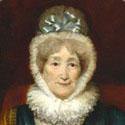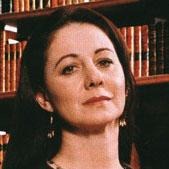Rudolph Ackermann and his Repository of Arts

Mr. Ackermann's shop in the Strand was the famous Repository of Arts, a print and picture emporium founded in 1796 by Rudolph Ackermann (1764-1834). Ackermann was born in Saxony and apprenticed to his father as a coach-builder. He designed coaches and carriages, working for famous Paris carriage maker Antoine Carassi before moving to London about 1784. He continued to make designs for British coach-builders and probably in the process became interested in the making of prints (for the coach designs). In 1795 he married and set up a print shop at 96 Strand and a year later took over a drawing school previously established by William Shipley (which lasted until 1806) at 101 Strand. Thus began the Ackermann print business which lasted over two hundred years. (As an interesting side note, in 1817 Rudolph Ackerman took out the British patent for German coach-builder Georg Lankenspergerâ's steering system design. This system became known as the Ackermann system, though Rudolph had nothing to do with its design other than to get the patent).
In 1797, Ackermann moved his shop to the premises at 101 Strand, which he named as 'The Repository of Arts" the following year. In 1827, Ackermann moved to 96 Strand, In this shop he sold not only prints and illustrated books, but also paper, art supplies (some manufactured by Ackermann himself), old master paintings, miniatures, and many other decorative items.  The Repository of Art became a most fashionable place for the upper classes of London to visit. You could browse through the books and prints to learn about the latest designs for clothing or interiors, tea and lectures were offered, and you could be seen to be sophisticated in your taste. Ackermann kept his shop absolutely elegant and up-to-date (his was one of the first businesses in the country to be illuminated by gas). The shop remained as a popular spot until it closed in 1856. Ackermann was not only a printseller, but he early on moved into publishing both separate prints and illustrated books. In 1808 to 1810 he published the first of his sumptuous plate books, the Microcosm of London, filled with lovely hand-colored aquatints. This work established his reputation as a publisher of books and it was followed later by much more similar books such as the History of the University of Oxford and the Rural Residences. Ackermann also published less elaborate illustrated books such as design books, illustrated manuals, and in 1823 he introduced the popular gift annuals with his Forget-me-not.
The Repository of Art became a most fashionable place for the upper classes of London to visit. You could browse through the books and prints to learn about the latest designs for clothing or interiors, tea and lectures were offered, and you could be seen to be sophisticated in your taste. Ackermann kept his shop absolutely elegant and up-to-date (his was one of the first businesses in the country to be illuminated by gas). The shop remained as a popular spot until it closed in 1856. Ackermann was not only a printseller, but he early on moved into publishing both separate prints and illustrated books. In 1808 to 1810 he published the first of his sumptuous plate books, the Microcosm of London, filled with lovely hand-colored aquatints. This work established his reputation as a publisher of books and it was followed later by much more similar books such as the History of the University of Oxford and the Rural Residences. Ackermann also published less elaborate illustrated books such as design books, illustrated manuals, and in 1823 he introduced the popular gift annuals with his Forget-me-not.

Besides his plate books, Ackermann was best known for the periodical he started in 1809, The Repository of Arts, Literature, Commerce, Manufactures, Fashion and Politics. This monthly magazine, which lasted until 1828, included articles and illustrations of all sorts, especially on fashion, social and literary news. Fashion plates were included in every issue, and some also included patterns and fabric samples. The magazine became eagerly anticipated by society women and had a huge influence on the fashion of the day. By the end of its run, Ackermann had published almost 1,500 hand-colored plates in the Repository, and there is no better visual source as to the nature of Regency society than these wonderful prints.
In addition to books, Ackermann published decorative hand-colored prints, including many political and social caricatures by and after Thomas Rowlandson. In 1818, Ackermann traveled to Germany to meet Alois Senefelder, the inventor of lithography, the following year published an English translation of Senefelder's treatise and so introducing the process to the Britain. Ackermann's business kept growing, by the the late 1820 opening outlets in Central and South America. Ackermann's descendants stayed in the print business until the late twentieth century when the firm was finally closed after about two centuries of print making and selling.
Christopher W. Lane is co-owner of The Philadelphia Print Shop, Ltd., which he founded along with Donald H. Cresswell in 1982. Besides buying and selling, Chris researches, lectures and writes extensively on old prints and maps. He has written numerous articles that have appeared in journals and books, as well as a series of booklets on print and map collecting. Chris has also authored Prints of Philadelphia (1990 with D.H. Cresswell), Impressions of Niagara (1993) and Panorama of Pittsburgh (2008), and has curated several print exhibitions. In 1991, Chris was on the 'panel of experts' for the American Historical Print Collectors Society's project of the New Best 50 Currier & Ives prints. Beginning in 1997, Chris has appeared, along with his partner, as the regular print and map appraisers for public television's Antiques Roadshow. This article first appeared on his Antique Prints blog, and is reprinted here with permission.



4 comments
Rudolph Ackermann was my husband’s fourth Great Grandfather, we have a beautiful original painting of his son in the exact same style as this painting of his father. We also have some prints of interest that may have come from his line and have information on our family tree of him and his relatives.
Juliet Moger
This is fascinating and I would love to see and read more of his work in person. He is my Great, great, great great grandfather.
Shanna Ackerman
I have a framed print with Rudolph Ackermann on the back. It has 2 Dutch men drinking in clogs.
Sharon MacNeil
I have an L.S Lowry drawing book from his Manchester art school days. It has 20 pencil drawings. This drawing book was produced for ACKERMANN & Co.,Repository of Arts, 96, Strand. The book we believe is 180 years old and the drawing papers are separated by tissue paper. They carry the following water mark:
J WHATMANN, TURKEY MILL, 1842.
Lowry undertook his drawings in 1915. So the book was 70 years old even then! The individual drawing are of a high standard and took 2 – 3 hours each.
Jeff Anderson
Leave a comment
This site is protected by hCaptcha and the hCaptcha Privacy Policy and Terms of Service apply.